(VOVworld) -“Do” paper is made from the bark of the Do tree, which can be found in Vietnam’s northern region. Having first appeared in the 13th century, this type of paper has been used widely in Vietnamese folk art, especially in Dong Ho paintings. Because the techniques of making Do paper are on the verge of extinction, the Zó project, a social enterprise in Vietnam, held a workshop titled “ Behind the folds” to arouse public interest in the paper and inspire them to Vietnamese folk arts.
“Zo Project” is a social enterprise that wants to find a new way to keep the Do paper alive. Established three years ago, the company has organized discussions and do paper-making classes to inspire people to appreciate this special material and the art it expresses. Van Anh, a member of the Zo project, elaborates on the steps of making do paper.“The traditional Do paper has to go through a series of meticulous and complicated steps, which are carried out manually. With up to 100 steps, the paper making process takes about 1 month before the handmade papers are ready to be used. “Do” is not just a simple sheet of paper; it’s a long story about preserving cultural and traditional values.”
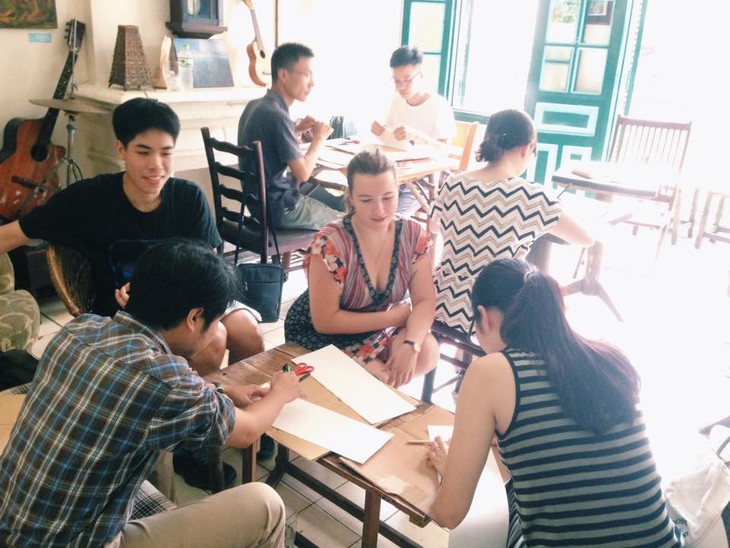 |
Zó project, a social enterprise in Vietnam, held a workshop titled “ Behind the folds” to arouse public interest in the paper and inspire them to Vietnamese folk arts
(Source: Zo project official FB) |
Making Do paper is a painstaking process. It takes a lot of preparation and time but the result is very rewarding. Project members and artisans have been applying traditional skills, along with new techniques to diverdify the paper’s types and the colors. Van Anh said: “The paper has to be whitened before dying it. The colors are taken from fresh forest leaves as the dried ones won’t give the right colors. The red is taken from magenta leaves while the yellow is taken from “Hoang dang”, a medicinal plant growing in the forest. The “Cham” leaves make the paper light green. We also develop “drop leaves” technique, in which the fresh leaves are kept between many layers of the paper. The leaves that can be used includes “ngot” and bamboo leaves, which create a gentle and traditional beauty”
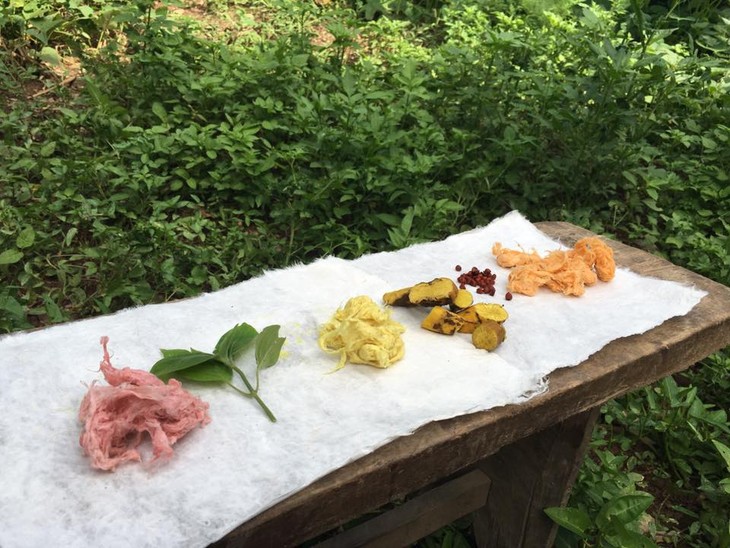 |
| The colors are taken from fresh forest leaves (Source: Zo paper official FB) |
In the past, Do paper was not diverse in types and colors. The dark yellow paper, which was appreciated for its high quality, was used for writing historical records and royal decrees only. The dark brown paper called “Zen”, which brought people a serene feeling when looking at, it was suitable for calligraphy. Now, due to relentless efforts from the Zo project members, the paper has branched out into more than 20 kinds, thus, handicraft lovers can feel free to choose the suitable papers for their work. Van Anh elaborates:“At the very first stage, we started with “Do” paper, which can be considered the inspiration of the project. The paper has rare qualities that other kinds of paper would hardly match. Apart from Do paper, we also branched out into other kinds of papers to meet requirements. However, the “do” paper is still irreplaceable despite the significant development of other new materials.”Do paper is now no longer an ancient thing used to create works of folk arts, it is used to create handmade decors and contemporary artistic works. Minh Chau participated in the workshop of the “Zo” project.“In Vietnam, “Do” paper is widely known as the material of Dong Ho folk paintings. When joining the workshop, I realized that the paper can be used to make many modern decorative products. This is a new trend, which would raise people’s awareness of this traditional material.”
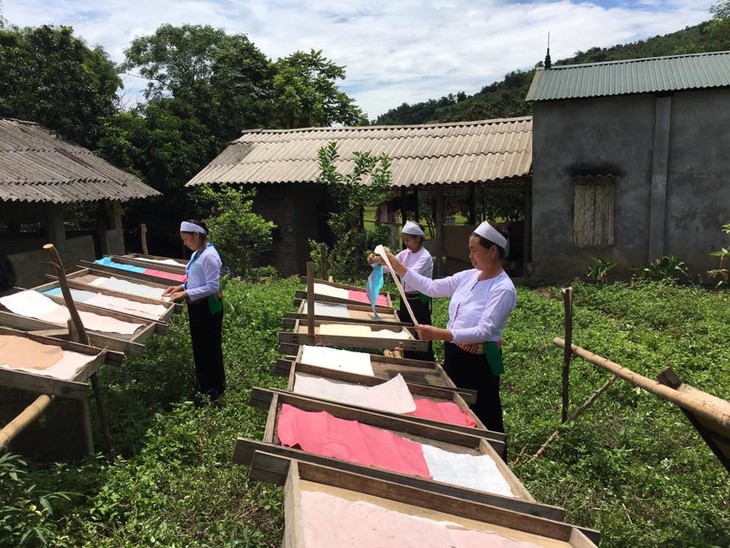 |
| The traditional Do paper has to go through a series of meticulous and complicated steps, which are carried out manually (Source: Zo project official FB) |
Thanks to the Do bark’s unique characteristic, the paper is durable and resilient, thus, it can be used to make notebooks, folk paintings, and even home decorations like lamps, vases, and so on. Diana Wagner, an object designer from France, is deeply in love with traditional Vietnamese folk arts especially Do paper. She is also an instructor at the workshop of the Zo project.“I found “do” paper very interesting. The texture, you need to touch it to understand, it’s thick and soft at the same time, and the fiber; actually it’s not like normal paper. You can touch it, you can feel the difference. I feel it in my gut. When I work on the object, I need to find the material and the “do” paper it was like “Oh my god! I can do so many things with it.” The texture is very suitable for origami and also for calligraphy. You can feel that it’s going to stay in shape but you will have the freedom to make a lot of folds. If that makes sense.”
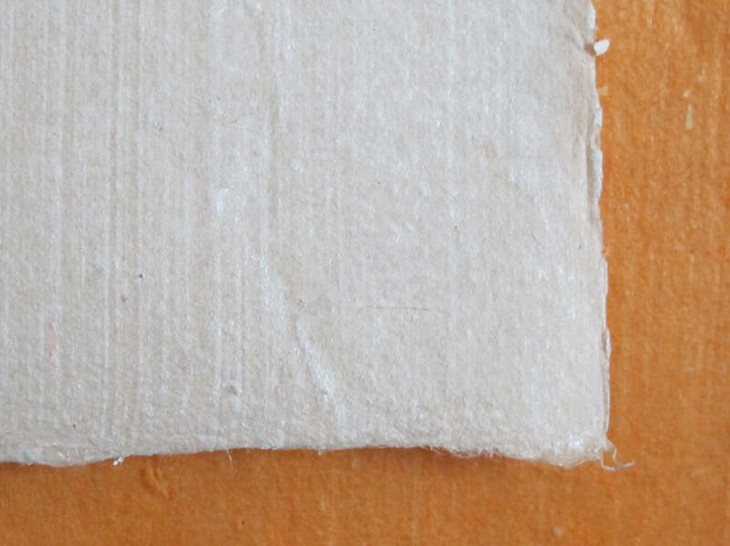 |
Thanks to the Do bark’s unique characteristic, the paper is durable and resilient
(Source: Bacninh.com) |
The home decors made from “do” paper are simple but incredibly beautiful. With creativeness and a lot of patience, simple papers could be transformed into lovely objects. However, each object can take thousands of tiny folds requiring hours of creativity and patience. Artist Diana Wagner said: “I was struggling for hours, like for the lamp I did, it took me 5 hours just for the folds, and the whole design took me about 2 weeks. I spent hours and hours looking at the papers, my back was like this, and oh my god, but I did feel so grateful and so happy like yeah I made it. You need to be very precise, very careful, very focused, you don’t think about anything else, just think about the paper, and nothing else exists, so it’s a kind of meditation anyway.”
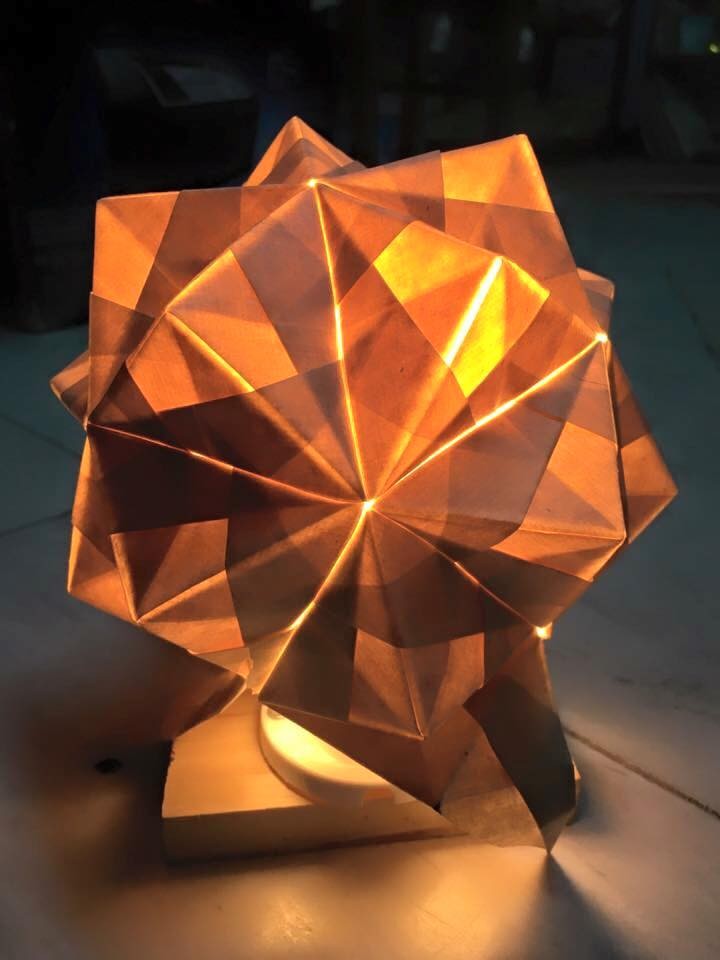 |
each object can take thousands of tiny folds requiring hours of creativity and patience
(Source: Zo project official FB) |
A member of the class, Diana Bustamante from Argentina was impressed by the paper making process and the folding techniques she learnt at the workshop. She said:“Yeah, I love it. It was very nice. We learnt how to make different objects. Well, it is handmade, which is completely different from the others. It takes a lot of work to make. It’s a long process and that makes it valuable for me at least.”
As the country develops, a large number of Vietnamese traditional materials have been on the verge of fading out of people’s memories. Over the years, the craft of making “Do” paper has declined. Nowadays, only some villages in Vietnam’s northern regions are still engaged in the craft. The questions about how to protect and promote this traditional craft still remain. Diana Wagner from France told the story about her country’s effort in preserving their traditional values and how it is linked to Vietnam’s situation.“Actually, now, we are losing a lot of traditional handcraft and values, so a lot of young designers are trying to promote the old crafts and the old techniques. So it’s really difficult as we’ve forgotten how to make them and it’s so sad. I don’t want this to happen in Vietnam. So we should try to preserve it before it’s gone forever. I’ve traveled a lot in Viet nam. I have seen so many minorities like the Cotu weavers, they weave the pearl inside the fabric, you know, not after, but inside it, it’s amazing, but they just do their clothes, so maybe we should encourage them to make other designs, other patterns, so it can develop and grow, and maybe sell these products internationally, so we can teach everybody how Vietnam wonderful is.”
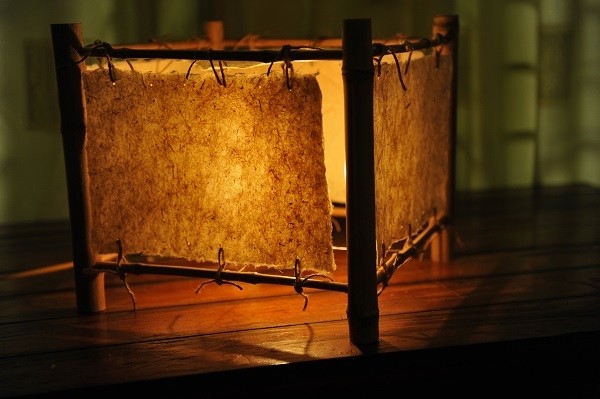 |
The home decors made from “do” paper are simple but incredibly beautiful
( Source: Andofotherthings.com) |
“Do” paper has astonishing values as the folk paintings and scripts drawn on it are still intact and as sharp as newly written even after hundreds of years. However, this traditional material will be lost when production is discontinued because of the rapid growth of modern society. Van Anh from Zo project has been wondering of how to revive “Do” as well as other traditional materials.“We need more people joining hands to preserve these extraordinary materials. I think we need to bring them closer to the people by introducing them on TV, on the Internet, Fb, and so on. I strongly believe that when the youth falls in love with these traditional materials, with their creativity and energy, they will find more effective ways to develop them and keep them alive.”
This week, we’ve been talking about Do paper and the stories behind the folds. We welcome your feedback at: English section, Overseas Service, Radio Voice of Vietnam, 45 Ba Trieu Street, Hanoi, Vietnam. Or you can email us at: englishsection@vov.org.vn. Tune in to our English program on the Internet at vovworld.vn. Good bye. See you next time.